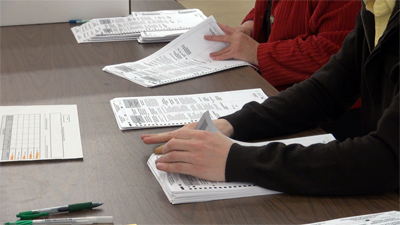Audit
Summary

Following each election, a board of elections should conduct a public post-election audit of that election’s results to ensure the ballots were accurately tabulated. There are three types of post-election audits: a fixed rate audit, a tiered audit, and a risk-limiting audit. While each of these three methods involves its own unique set of procedures, they all require a bipartisan hand count of a certain percentage of ballots for one or more contests from that election. Although this auditing guide will explain how to conduct all three methods of auditing, the Cuyahoga County Board of Elections currently utilizes the risk-limiting method of election auditing.
In addition to conducting logic and accuracy (L&A) testing to ensure the accuracy of its voting equipment, there are four key steps a board of elections should also take to ensure accurate election results and increase the likelihood of conducting an error-free post-election audit. These steps include the utilization of central count ballot scanning verification, Election Day auditing, poll book justification, and ballot reconciliation. In this auditing guide, these four processes will be considered an integral part of the auditing process, and the method of conducting each process will be thoroughly explained.
« Start the Auditing Guide »